MARKETING
20 Best Tools To Help You Scale
To grow and succeed in the digital marketplace and increase your team’s content marketing effectiveness, you must build a dependable tech stack that will allow you to grow without placing too much pressure on you or your team.
In this article, we’ll provide ways to boost the efficiency of content marketing strategies and a list of tools to aid you in achieving your objectives together with higher performance.
Strategies for scaling your content marketing efforts
Before we get into the technology you can use to improve your content marketing, let’s look at how you can get better results from developing a successful content team to help improve your performance.
Every team member will have a different job. They will use their respective skills to help the team reach its goals:
Managing editor
This is the person in charge of your content team. They ensure that all the material published is high quality and consistent with the brand’s messaging. Often, their responsibilities include hiring content writers and then collaborating with them to ensure everything is correct and on track.
SEO analyst
This team member is in charge of ensuring that your website meets SEO standards. They also select the best keywords for each article. SEO analysts help ensure that your material is indexed properly and written with search intent in mind.
Content writer
Most content marketing teams employ in-house writers, outsource the work to independent contractors, or a mixture of both. Because “content” is at the center of all content marketing operations, these individuals are essential for generating high-quality and research-driven material for your blog and other content assets.
Outreach manager
This individual is in charge of sending your material to the appropriate forums on sites where your leads and influencers congregate and creating backlinks so that you receive the most value from each piece of content.
Top tools to grow content marketing and automate workflow
Inefficient workflows can result in delays in the creation of content as well as low-quality content because team members may struggle to work together and communicate effectively. Here are five tools that allow you to take control over the content creation process.
1. Google Docs
Google Docs is a free writing program that permits you to create, edit, and share documents online wherever you are. It is an excellent tool for collaboration and helps your team work together by giving them editing access. Features like “comments,” “suggestions,” and “mentions” let you add relevant information and people to your Docs.
2. GatherContent
GatherContent can be described as a central platform for content creation and collaboration that allows rapid and effective content production.
The tool offers a medium that lets your team edit and create content, monitor its progress, and publish it when it’s ready. Your team can also create structured content on a large scale in a split second.
3. Narrato
Narrato is a team management system that lets you streamline and control your content creation process, aiding cooperation. The tool has many useful features, including AI assistance, image search, content idea generators, and employee management options. You can organize content using boards, folders, and calendars.
4. Monday.com
It is an “everything you need” platform with collaboration campaign planning and content management tools. The fully customizable templates help your team collaborate, plan, and manage content production more efficiently.
5. Wordable
Wordable allows you to upload Google Docs drafts into WordPress in just minutes and in a designated format. The tool helps keep your documents clean, removing unnecessary spaces and line breaks as well as removing font and span tags.
It also performs other functions such as generating tables automatically, simulating featured images, helping to choose alt text for images, etc.
The best tools for scaling the writing process and optimizing content
Your efforts to market your content depend on your writing skills or search engine optimization strategies. Here are tools that help you improve the writing process and SEO.
1. WriterAccess
WriterAccess is a platform that connects you with freelancers to create content and streamline your workflow. The Partner AI tools let you research trending topics, find new keywords, optimize content, and track SERPs.
2. Frase
Frase is a tool powered by AI that detects your audience’s questions and assists you in responding to them. It helps your team identify the questions your site visitors would like answered using Google Search. It also creates detailed briefs that allow you to modify your content to meet users’ preferences.
3. MarketMuse
This artificial intelligence-based keyword and content planner allows you to speed up the research process and identify what’s missing from your content compared to your competitors. The tool also helps with content optimization for Google search.
4. Clearscope.io
Clearscope.io makes it possible to discover potential keywords and determine terms you can integrate into your content to optimize it for search engines. The tool is also great for researching content and developing freelancer content briefs.
5. Writesonic
Through Writesonic’s artificial intelligence-powered Writer and Editor, you can write blog posts, articles, essays, e-books, and other types of content at the touch of an icon. Furthermore, you can use our editing tools powered by AI, such as paraphrasers, expanders, and shorteners, to enhance your content.
The most effective methods to increase the reach of content and establish collaborations
Content promotion is an excellent way to connect with the people you want to reach. The following tools will help you connect with your audience and establish collaborations.
1. Evaboot.com
The most trusted place to find colleagues is LinkedIn. You can pull and search for emails in LinkedIn Sales Navigator with one click using Evaboot.
Evaboot can help you find suitable contacts by scouring the most extensive business network. It achieves this through an extremely effective filter that provides accurate and high-quality results that enable you to connect to skilled people who could help you reach your goals.
2. Respona.com
Respona.com is a link-building software that automates outreach, designs personalized email campaigns, locates emails of individuals you want to contact, and then sends customized pitches to these contacts. Using this tool, it is also possible to build automated sequences of emails you can use to mail personalized proposals to your email list.
3. Mailshake.com
Make your cold outreach fully automated with Mailshake to reach more potential customers and set up more meetings. Mailshake’s email tool utilizes AI and information from thousands of cold email campaigns to create constant, high-quality emails you can send to your leads.
Furthermore, you can use an integrated screen to contact prospects via phone or social media.
4. Hyperise
Hyperise lets you personalize images in your emails, Facebook messaging, chatbots, and LinkedIn. You can customize layers on existing images using Hyperise’s online editor and adjust them instantly on your website.
5. Icereach
Icereach can reach potential clients through LinkedIn by using intelligent automated sequences. The tool makes it easy to import leads and customize the outreach to a grander scale by adding distinct elements to create an original and customized message. The program will then create an automated drip program with automatic follow-ups.
The most practical tools to improve content distribution
Without an appropriate distribution system that allows you to reach your target audience and display your content quickly, all your efforts will go to the trash even after you’ve created some amazing content. Here are five tools that let you easily publish, share and promote your content.
1. IFTTT
IFTTT is a program that lets you connect to, incorporate, and automate the use of your favorite applications. In integrating with more than 250 personal and business applications, IFTTT is one of the most effective ways to automate your content promotion efforts.
2. Moosend
With its easy-to-use interface, this newsletter tool not just assists you with the design of email drives but also helps you target your list of contacts with specialized content.
3. Planable
You can easily organize your social media posts, collaborate with other users, and plan it from anywhere with Planable. The tool also helps you streamline your social media publishing process by letting you schedule your posts.
4. Quuu
Quuu is software that can help you get top-quality suggestions according to your target audience’s interests. Quuu’s proprietary artificial intelligence algorithm will identify high-quality content and send it to your third-party scheduling tool. It is one of the best tools to automate your social media marketing!
5. Outbrain.com
Outbrain provides marketers with customized recommendations for the top magazines in the world to reach their targeted audience. Its proprietary algorithms help capture your audience’s attention and guide them into taking action.
Wrapping up
Content marketing is the best way to establish the credibility of your brand and expand your enterprise. The tools listed in this guide can be utilized to create a distribution plan, measure your marketing effectiveness, and even make your customers feel more involved, assisting you in improving your company’s performance.
MARKETING
Quiet Quitting vs. Setting Healthy Boundaries: Where’s The Line?

MARKETING
Microsoft unveils a new small language model

Phi-3-Mini is the first in a family of small language models Microsoft plans to release over the coming weeks. Phi-3-Small and Phi-3-Medium are in the works. In contrast to large language models like OpenAI’s ChatGPT and Google’s Gemini, small language models are trained on much smaller datasets and are said to be much more affordable for users.
We are excited to introduce Phi-3, a family of open AI models developed by Microsoft. Phi-3 models are the most capable and cost-effective small language models (SLMs) available, outperforming models of the same size and next size up across a variety of language, reasoning, coding and math benchmarks.
What are they for? For one thing, the reduced size of this language model may make it suitable to run locally, for example as an app on a smartphone. Something the size of ChatGPT lives in the cloud and requires an internet connection for access.
While ChatGPT is said to have over a trillion parameters, Phi-3-Mini has only 3.8 billion. Sanjeev Bora, who works with genAI in the healthcare space, writes: “The number of parameters in a model usually dictates its size and complexity. Larger models with more parameters are generally more capable but come at the cost of increased computational requirements. The choice of size often depends on the specific problem being addressed.”
Phi-3-Mini was trained on a relatively small dataset of 3.3 trillion tokens — instances of human language expressed numerically. But that’s still a lot of tokens.
Why we care. While it is generally reported, and confirmed by Microsoft, that these SLMs will be much more affordable than the big LLMs, it’s hard to find exact details on the pricing. Nevertheless, taking the promise at face-value, one can imagine a democratization of genAI, making it available to very small businesses and sole proprietors.
We need to see what these models can do in practice, but it’s plausible that use cases like writing a marketing newsletter, coming up with email subject lines or drafting social media posts just don’t require the gigantic power of a LLM.
Dig deeper: How a non-profit farmers market is leveraging AI
MARKETING
Navigating the Video Marketing Maze: Short-Form vs. Long-Form


Are you torn between using long-form or short-form videos for your small business marketing campaign? Well, you are not alone. Despite 89% of consumers wanting to see more brand videos, there is no one-size-fits-all answer about the ideal video length.
However, this should not deter you from creating an effective video strategy. In 2023, people watched an average of 17 videos per day, highlighting the influence of video content in today’s digital landscape.
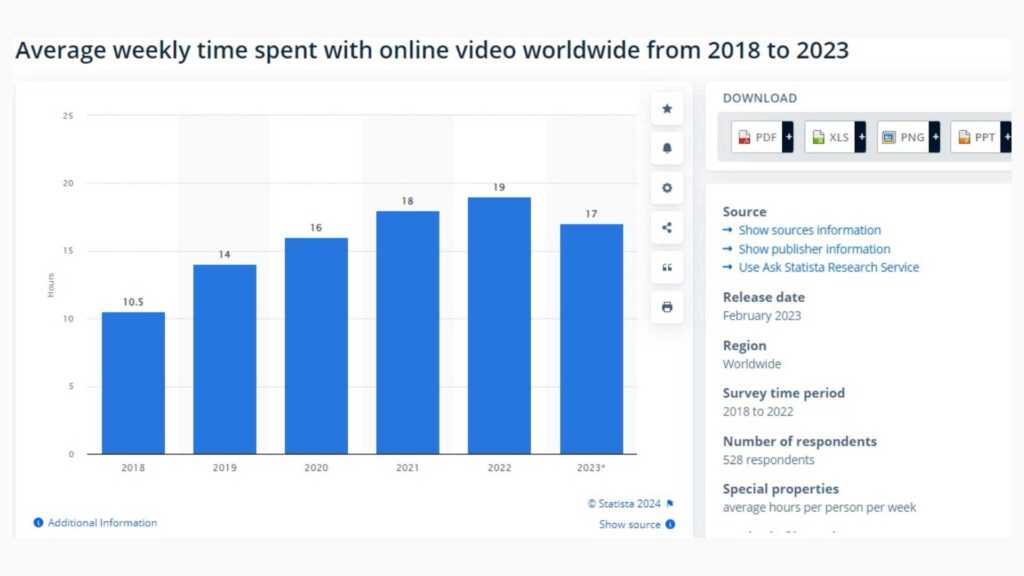

Both short-form and long-form videos offer unique advantages and come with their set of challenges. Join me as I uncover the benefits and limitations of each video format to help you make informed marketing decisions.
What are Short-Form Videos?
Short videos typically range from 30 seconds to less than 10 minutes long. They are popular on social media platforms like TikTok, Instagram, Snapchat, and YouTube.
Short-form videos deliver brief yet engaging messages that quickly capture the viewer’s attention. Here are some popular types of short-form video content.
- TikTok Challenges
- Instagram Reels
- Snapchat Stories
- YouTube Shorts
- Twitter Video Ads
Benefits of Short-Form Videos
A previously cited report shows that 39% of marketers find short-form videos, ranging from 30-60 seconds long, more successful. The same study reports that 44% of customers prefer watching a short video to learn about a brand’s offerings.
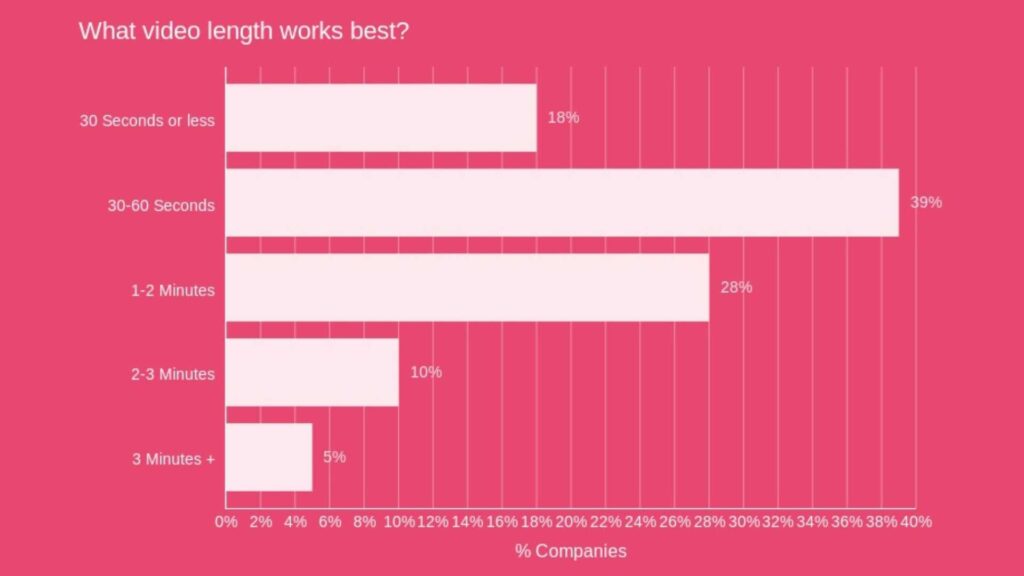

So, it is evident that short-form videos have their benefits. Let’s take a closer look at some of them.
Attention-Grabbing
Short-form videos capture attention quickly, making them ideal for the fast-scrolling nature of social media platforms. Your audience is more likely to watch them in their entirety compared to longer content.
Cost-Effective Production
Creating short-form videos requires less time and resources compared to longer videos. As a small business owner with a limited budget, using short-form videos can be cost-effective.
Increased Engagement
Short-form videos engage viewers due to their crisp and concise nature. This results in more likes, comments, and shares that boost your content’s visibility and increase brand awareness.
Integrating short-form videos into your influencer marketing campaigns can further amplify your reach to new and diverse audiences.
Highly Shareable
Short videos are highly shareable. This makes it more likely for your viewers to share them, increasing their virality.
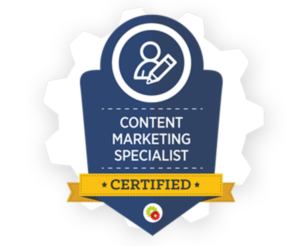

Want to get certified in Content Marketing?
Leverage the tools and channels to predictably and profitably drive awareness, leads, sales, and referrals—EVERYTHING you need to know to become a true master of digital marketing. Click Here
There are multiple benefits of adding video to your website including increased engagement, improved SEO, and enhanced user experience.
Limitations of Short-Form Videos
While short-form videos offer many advantages in content marketing, they also present some challenges.
Limited Message Depth
Due to their brief duration, short-form videos may struggle to convey complex or detailed messages. Longer videos might be more suitable if you need to communicate intricate information.
Competition for Attention
Standing out on platforms flooded with short-form video content can be challenging. You must create content that stands out to avoid becoming lost in the sea of other videos.
Shorter Lifespan
Short videos may lose their relevance with time. They can quickly get buried in users’ feeds, leading to a shorter visibility and engagement period than longer, evergreen content.
This means you must consistently create short-form videos to maintain audience interest over time.
Limited SEO Impact
Short-form videos may be more challenging to optimize for search engines than longer, more keyword-rich content. This can affect the discoverability of your content outside the social media scene.
What are Long-Form Videos?
Long-form videos are typically longer, ranging from a few minutes to several hours. They extend beyond a few minutes to several hours, providing ample time for in-depth topic exploration and detailed content.
These videos are particularly suitable for educational content, product demonstrations, and narrative-driven storytelling. Long-form videos are common on platforms like YouTube and Vimeo. Common types of long-form video content include:
- YouTube Series
- Webinars
- Educational Tutorials and Courses:
- Behind-the-Scenes Content
- Interviews and Conversations
Advantages of Long-Form Videos
Long-form video content is the fastest-growing segment, with videos above 30 minutes experiencing tremendous growth over the years. Let’s explore some of the benefits behind this growth.
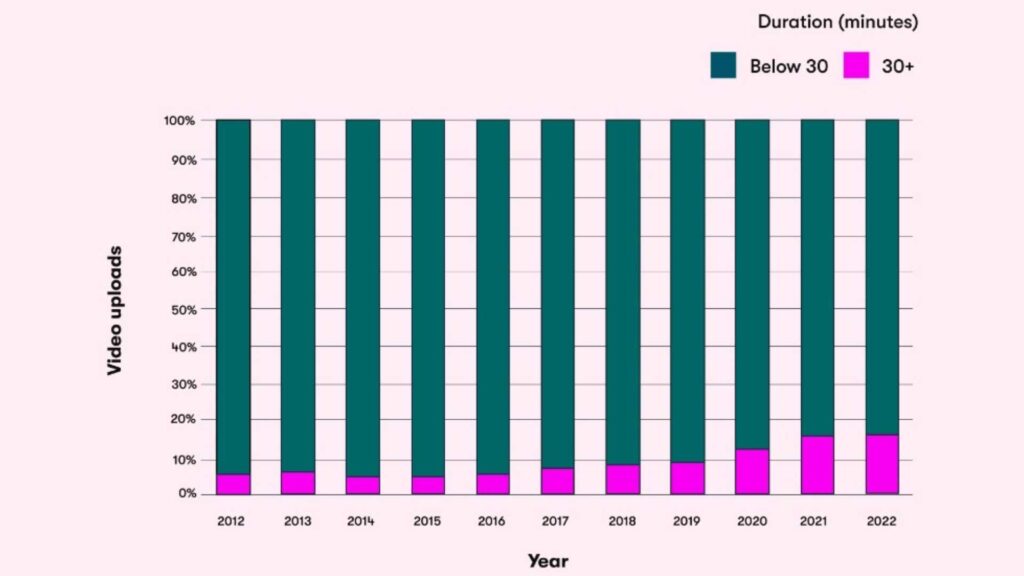

Establishes Expertise and Credibility
Long-form videos allow you to provide in-depth information about various subjects, establishing your brand as an authority. Potential customers will likely trust and rely on your insights when you consistently deliver valuable content.
Builds Strong Audience Connections
The more your audience watches your videos, the more they become familiar with your content and brand. This consistent engagement promotes trust and loyalty, helping you create deeper connections with your audience.
Provide SEO Optimization Opportunities
Long-form videos keep your audience engaged for a longer duration than short ones. This signals search engines that your content provides value, resulting in higher rankings and increased visibility.
Besides, these videos provide opportunities to optimize for relevant keywords. This Attrock guide offers more insights into the value of SEO for your small business.
They Are Sustainable
Unlike short videos, well-produced and valuable long-form videos have an extended shelf life. They can continue to attract views and engagement over an extended period, contributing to a sustainable content strategy.
Instagram reels are also a part of short videos and you can get benefits from this platform by integrating it with your website. You can learn how to embed Instagram Reels on websites and get extra benefits from your Reels.
Drawbacks of Long-Form Videos
Despite their benefits, long-form videos also have certain limitations, including:
Attention Span Challenges
Between distractions, juggling tasks, and information overload, user attention span quickly diminishes. Viewers may lose interest and disengage from your long video before its conclusion.
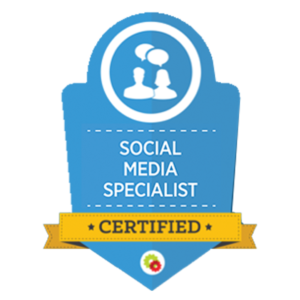

Are You Ready to Master Social Media?
Become a Certified Social Media Specialist and learn the newest strategies (by social platform) to draw organic traffic to your social media sites.
Complex Production Process
Creating high-quality long-form videos requires more resources, including time, equipment, and skilled personnel. This can be disadvantageous, especially for small businesses with limited budgets.
Platform Limitations
Some social media platforms and video hosting sites may limit video length, making it challenging to distribute long-form video content. You may then be forced to repurpose your content to suit various platforms.
Short-Form or Long-Form Videos: Which Are Better?
Now that you know the benefits and limitations of each format, which one should you choose? Short-form or long-form videos?
Well, it all boils down to considering several factors, such as:
Content Objectives
What do you want to achieve from your video marketing campaign? Short-form videos are highly effective for quick brand exposure and generating buzz. Long-form videos, on the other hand, contribute to a more in-depth understanding of the brand.
Target Audience Preferences
Audiences with short attention spans likely prefer short-form videos, while long-form videos appeal to those seeking a more immersive experience.
Similarly, short-form videos may appeal more to younger audiences, while older demographics may prefer the depth of long-form content.
Platform Dynamics
Various platforms support different content formats. Short-form videos are well-suited for platforms like TikTok, Instagram, and Snapchat. On the other hand, platforms like YouTube and Vimeo are better for hosting longer videos.
Industry Type
Short-form videos would be ideal if your industry thrives on trends, entertainment, and quick messages. However, long-form videos are effective for industries requiring in-depth explanations or educational content.
Bottom Line
Ultimately, choosing short-form or long-form videos depends on your business’s specific needs and goals. Since both formats have advantages and limitations, making a choice may prove difficult.
However, it doesn’t have to be an uphill task. The key lies in recognizing when to incorporate each video format into your marketing strategy. Understanding your audience and its needs allows you to combine both formats strategically, maximizing the benefits of each.
Continuously analyze performance metrics and adapt your video marketing strategy accordingly to ensure optimal engagement and conversion rates.
-

 PPC7 days ago
PPC7 days ago10 Most Effective Franchise Marketing Strategies
-

 MARKETING5 days ago
MARKETING5 days agoEffective Communication in Business as a Crisis Management Strategy
-

 SEARCHENGINES6 days ago
SEARCHENGINES6 days agoGoogle Won’t Change The 301 Signals For Ranking & SEO
-

 SEARCHENGINES7 days ago
SEARCHENGINES7 days agoGoogle Again Says Ignore Link Spam Especially To 404 Pages
-

 SEO5 days ago
SEO5 days agobrightonSEO Live Blog
-

 PPC6 days ago
PPC6 days ago9 Ecommerce Trends to Boost Your Business in 2024
-

 SEO7 days ago
SEO7 days agoMeasuring Content Impact Across The Customer Journey
-

 SEO6 days ago
SEO6 days agoHow To Write ChatGPT Prompts To Get The Best Results








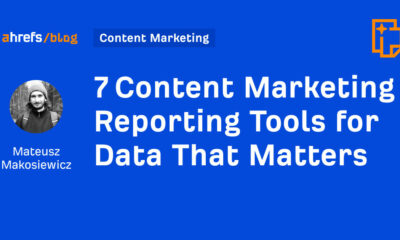








You must be logged in to post a comment Login